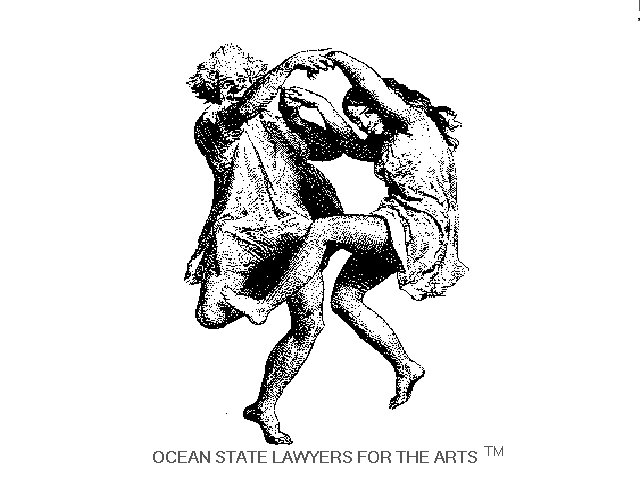
A trademark is a symbol, logo, phrase, or a combination of all three placed on a product or used in conjunction with a service provided to the buying public. The mark is used to identify a company or manufacturer, and it distinguishes that company's products from those of its competitors.
Trademarks registered in the Federal Patent and Trademark Office are accorded protection under the Lanham Act, which prevents a diversion of sales through a competitor's use of the owner's mark or of one that is confusingly similar. The owner's reputation is also protected from damage when the competitor's product is of inferior quality and the public might confuse the inferior product with that of the mark's owner. State trademark laws provide similar protection.
Trademark law can help you as an artist by protecting your use of your name or a distinctive logo. It may prevent misappropriation of your name, or under certain circumstances, your work. Trademark law also can be seen as a specific category of unfair competition law. Unfair competition exists when there is confusion as to the origin of products or services, because of the passing off of one's goods as those of another, or the appropriation of the good will and reputation established by another's distinctive product name or appearance.
The elements of unfair competition are generally prescribed by state legislatures and common law established by state courts and, therefore, may differ. One state may require that an actual ``palming off'' must be proven, while another state simply may need proof that the competing product would create a likelihood of confusion as to the source of the products. The basic test, though, is whether persons exercising reasonable intelligence and discrimination would be taken in by the similarity.
Depending upon the circumstances, the law of unfair competition can provide you, as an artist, with a broad range of protection: It can prevent your being presented as the author of a work you did not create, or a work that is an altered version of your own; It can prevent others from taking credit for the creation of your work; It can prevent others from using titles for their works that are identical or similar to those you have used for your works. It is generally necessary, in this instance, that your titles have acquired a ``secondary meaning,'' in that the public identifies the use of those titles with your work. As stated earlier, it will prevent others from unfairly competing with you by confusing the public and benefiting from the reputation you have established for your product's name, appearance, and style. Of course, if you give away your right to be credited with authorship of a work, the law of unfair competition isn't going to return that right to you.
Any action based on the theory of unfair competition generally must be brought in a state court, as state law establishes the concept. In addition, the federal Lanham Act, which is the law governing federally registered trademarks, provides that anyone who uses ``a false designation of origin, or any false description or representation'' in selling goods or services is liable in a civil action brought by anyone damaged or likely to be damaged by the false representation. This statute is considered to be a codification of certain unfair competition remedies. It has not been widely used, but it may provide artists with a means to prevent unfair competition in federal court.
BETTE MIDLER DID IT, SO CAN YOU.
A perfect example of an artist protecting their style is the legal action taken by Bette Midler against Young & Rubicam, an advertising agency which hired a singer to imitate Midler's version of "Do You Wanna Dance." The sound-alike advertisement was considered by the Court to be an infringement of Midler's rights under a California law that extended the protection of celebrities' names and images to their voices.
This kind of action has developed into the "Right of Publicity." In any event, It should be understood that, when bringing a legal action against another for unfair competition, for infringement of a trademark or a copyright, or for a breach of contract, it is generally necessary to retain competent counsel. The intricacies of the theories of the law involved in such actions are generally too complex for laypersons, as well as for attorneys not specializing in the arts and entertainment field. You must also understand that the various remedies available under the laws of contracts, copyright, trademark, and unfair competition are all subject to state or federal statutes of limitation which require that you file a legal action within a specified number of years after your rights have been infringed upon. althouh the number of years varies depending upon the applicable law.
First Published Version, Copyright 1991 David M. Spatt.
THIS WEBSITE CANNOT BE USED AS A SUBSTITUTE FOR SOUND LEGAL ADVICE FROM A COMPETENT ARTS OR ENTERTAINMENT ATTORNEY.
In the event of a legal problem or question, specific legal consultation is advised. This website is intended only as a means of educating arts organizations and artists of all disciplines as to their potential legal rights and liabilities. The information provided is made available with the understanding that neither OSLA nor the office of David M. Spatt is engaging in the rendering of legal counsel.copyright 1997 David M. Spatt, All rights reserved
Reproduction is prohibited without the express written consent of the author
